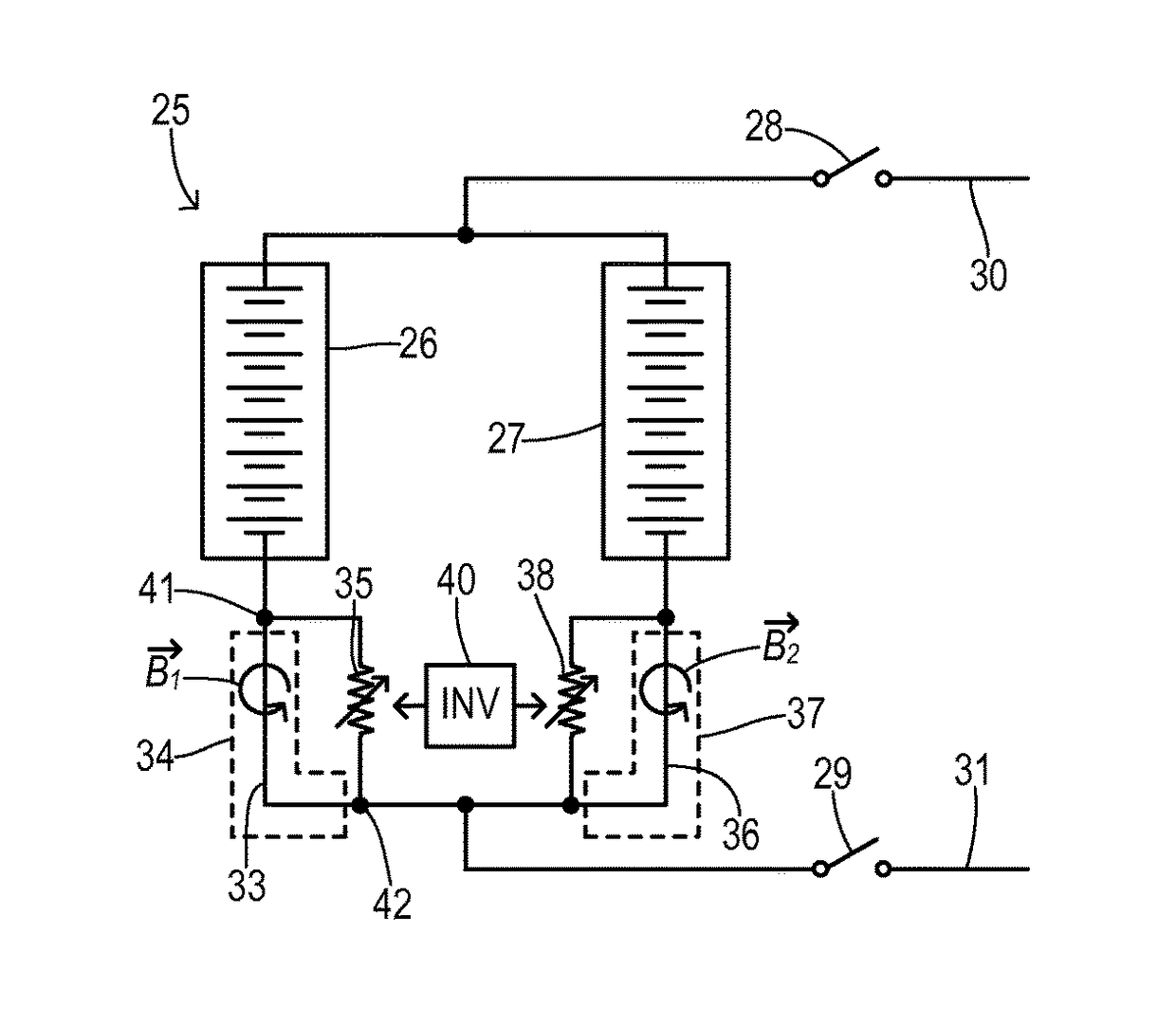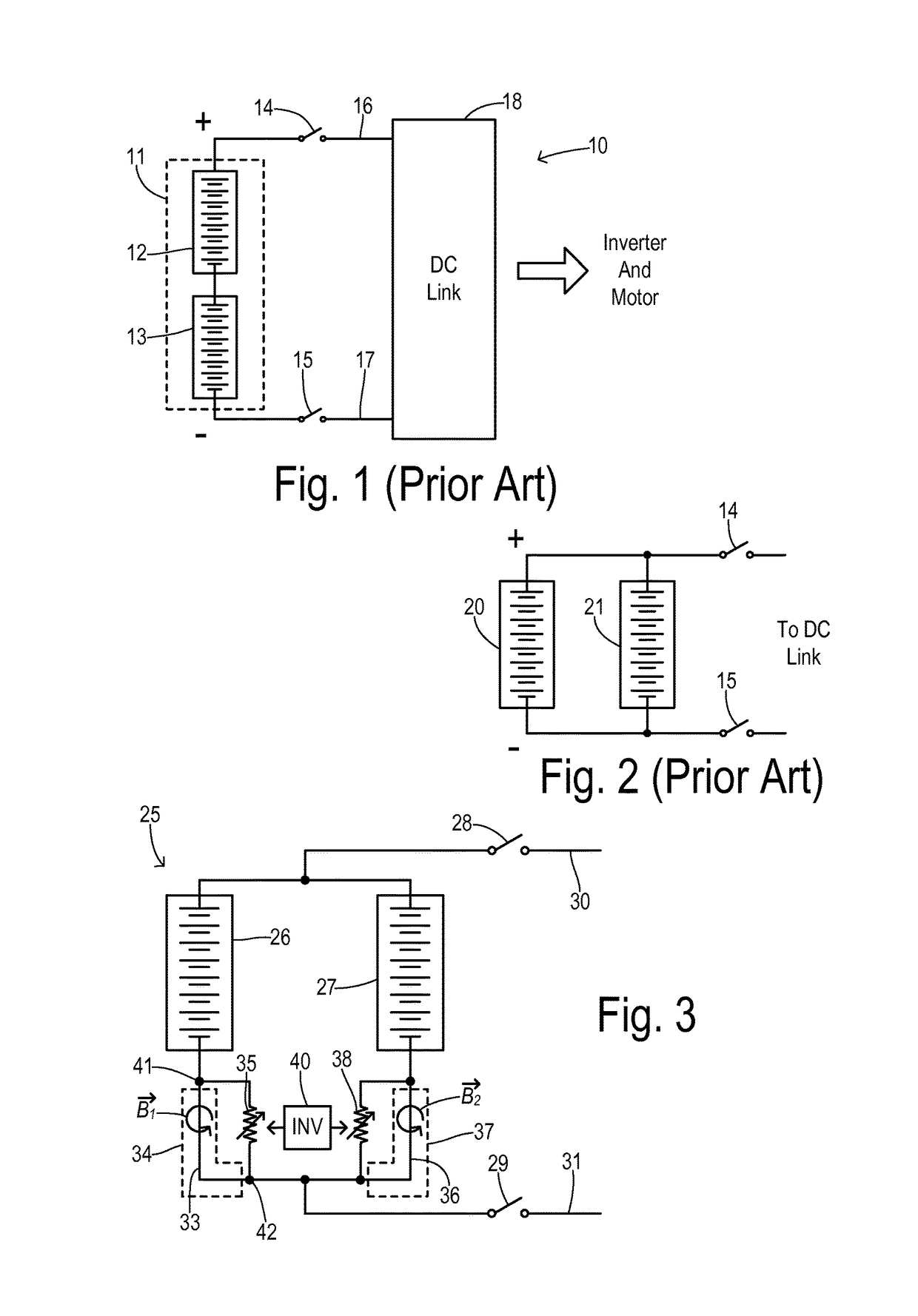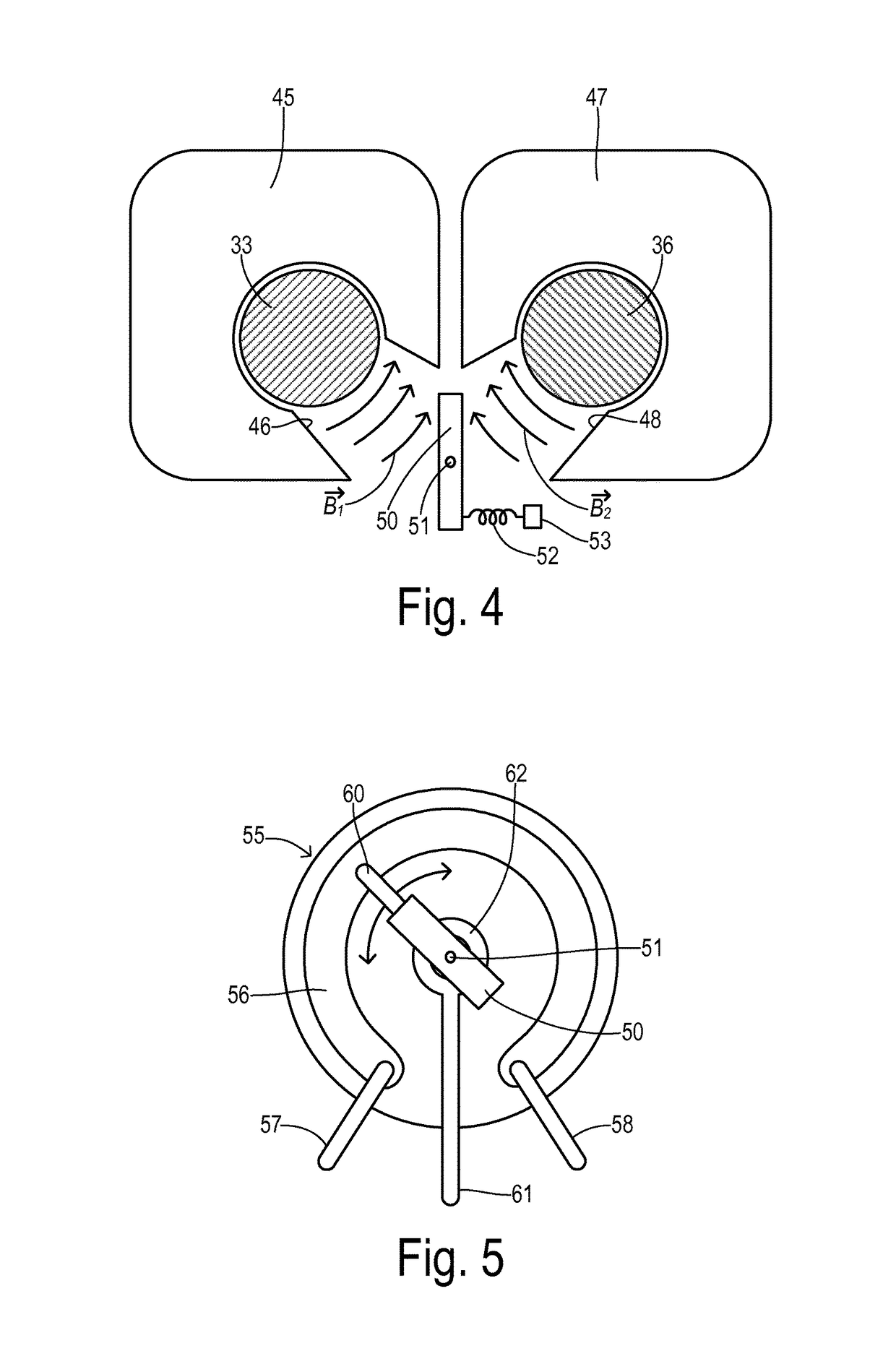Current balancing device for parallel battery cells in an electrified vehicle
a parallel battery cell and battery cell technology, applied in battery/fuel cell control arrangement, electrochemical generators, transportation and packaging, etc., can solve the problems of increasing parasitic chemical reactions within the battery cell(s), resistive losses, and unbalanced current magnitude of different parallel battery elements, so as to increase the response to the induced magnetic field, increase the magnetic permeability, and maximize the effect of field imbalan
- Summary
- Abstract
- Description
- Claims
- Application Information
AI Technical Summary
Benefits of technology
Problems solved by technology
Method used
Image
Examples
Embodiment Construction
[0019]Referring to FIG. 1, an electric drive system 10 for a transportation vehicle includes a battery pack 11 with series-connected battery elements (e.g., cell strings) 12 and 13. Contactor switches 14 and 15 couple battery pack 11 to a positive bus 16 and negative bus 17, respectively, and to a DC link 18 for providing DC power to an inverter and motor / generator as known in the art. As shown in FIG. 2, it may alternatively be desirable to place battery elements 20 and 21 in parallel. The parallel elements provide a combined DC output to the buses via contactor switches 14 and 15 in order to deliver a high current level with less overall resistive losses (as compared to the series connection). Each battery cell or string of cells has a respective internal resistance (DCIR) which is in series with the current flowing through the respective battery element. In the parallel arrangement of FIG. 2, when the DCIR values of battery strings 20 and 21 diverge for any reason, then unequal c...
PUM
 Login to View More
Login to View More Abstract
Description
Claims
Application Information
 Login to View More
Login to View More - R&D
- Intellectual Property
- Life Sciences
- Materials
- Tech Scout
- Unparalleled Data Quality
- Higher Quality Content
- 60% Fewer Hallucinations
Browse by: Latest US Patents, China's latest patents, Technical Efficacy Thesaurus, Application Domain, Technology Topic, Popular Technical Reports.
© 2025 PatSnap. All rights reserved.Legal|Privacy policy|Modern Slavery Act Transparency Statement|Sitemap|About US| Contact US: help@patsnap.com



